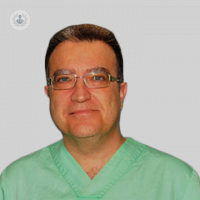Bariatric surgery: types and advances
Written by:Obesity is a disease with much incised in Spain and there are several surgeries to treat it. The technique that most experts bet on lately is the gastric sleeve, since it is useful when treating also the diseases associated with obesity.
Indications of bariatric surgeries
Whenever a body mass index of 40 or more is reached, surgery is the only treatment that has confirmed its benefit. This BMI is obtained by dividing the weight in kilograms by the height in meters squared.
In addition, in patients with a BMI of 35 or greater, with some disease associated with obesity such as type 2 diabetes, high blood pressure, cholesterol and triglyceride disorders or sleep disturbances (sleep apnea syndrome) They also benefit from bariatric and metabolic surgery.
Gastric bypass
It is a mixed technique (restrictive and derivative) in which the size of the stomach is significantly reduced and an intestinal short circuit is performed so that food does not pass through the entire small intestine, mainly through the duodenum and proximal jejunum. Its effects are, therefore, those of a restrictive technique that provokes early satiety and those of a derivative technique in which the absorption of food is diminished.

Sleeve gastrectomy
It is a restrictive surgery in which the size of the stomach is reduced according to a calibration that is used with special probes during the intervention. There is no intestinal short (bypass) and, therefore, the food goes through all the segments of the intestine being its absorption normal. It causes early satiety with a small amount of food, which is typical of restrictive techniques.
Adjustable gastric band
A band or ring that fits at the entrance of the stomach is introduced and therefore decreases this step. Patients notice satiety with a small amount of food. This band or ring fits more or less with a subcutaneous device, which is left under the skin in a very affordable place, to fill it or empty it with saline that opens or closes more or less the passage through the band. This seeks a balance between intake to be as little as possible, but also sufficient for the entry of food, avoiding vomiting.
Endobarrier
It is a technique that is done by endoscopy and in which a prosthesis is placed inside the stomach and duodenum that causes food to pass through it in the diameter of the prosthesis and also causes an early satiety by controlling the passage of nutrients.
Intragastric balloon
It is also placed by endoscopy and consists of leaving inside the stomach an inflated device that makes the patient feel a sense of fullness or continuous filling, thus causing an absence of feeling of hunger.. This ball is left for a certain time, around six months, during which time and thanks to that feeling of fullness and a proper diet you get a thinning.
Said thinning should be maintained after the withdrawal of the ball with changes in dietary habits, life, etc.. that could have been learned by the patient while he had the ball placed.
Gastric sleeve in obesity with comorbid diseases
Type II diabetes is the main comorbidity observed in patients with obesity. After the operation of gastric sleeve, 75% of those operated on no longer need medication so we consider this condition to be cured; in the rest of the cases, patients can control their glucose levels only by oral drugs without the need to inject insulin.
Other associated pathologies that also improve or even disappear are sleep apnea, high blood pressure, and of course they obtain an improvement in their indescribable quality of life.
Choose convenient bariatric surgery
Any surgery for obesity has its advantages and disadvantages, but we must significantly improve the problems of our patients, ensuring a frank reduction in weight and an improvement in associated diseases, if any, and without adding other problems such as alterations. in the absorption of proteins, vitamins, iron and other minerals, etc.
That is why today, more and more vertical gastrectomy, commonly called gastric sleeve, is the technique that is gradually being done and whose long-term results are already defined as spectacular.
3D technology in bariatric surgery
Mainly the benefits result in patient safety. The team of surgeons has a much more complete field of vision and the maneuvers are much simpler, especially the dissection of the stomach and sutures. The three-dimensional screens allow us to visualize the interior of the abdominal cavity in the same way as if the operation were open.
All this means that the surgeon has much more control, interventions are shorter and safer. Being able to perform 3D operations is a real revolution, it is the closest system that exists to robotic surgery, but without the high investment that this requires.
Forecast
The change is radical and relatively fast, because within a period of 12 months after the intervention the patient can obtain a reduction of overweight of up to 80%. We have verified that after 12 months after the operation, the average weight of the patients was 88 Kg.. But the improvements are seen in everything: the average in terms of hospital stay is 1.3 to 2 days and the intervention usually lasts only 45 minutes, much shorter than before implementing three-dimensional surgery.


